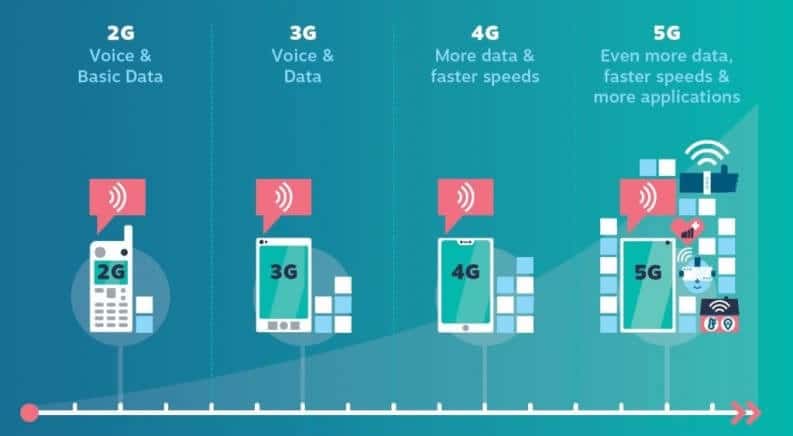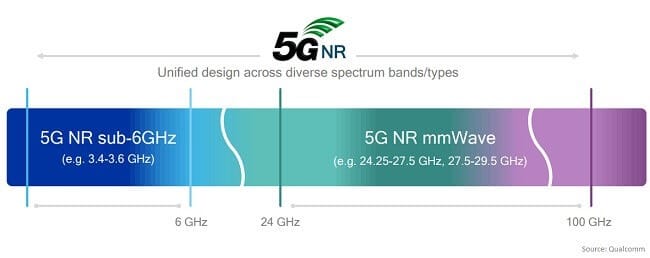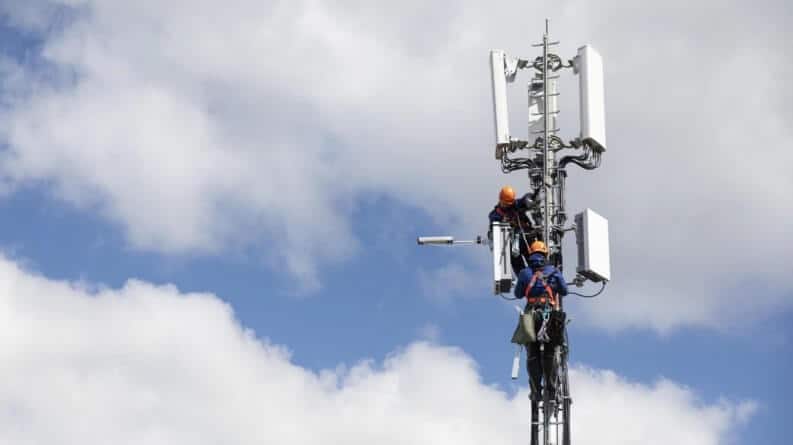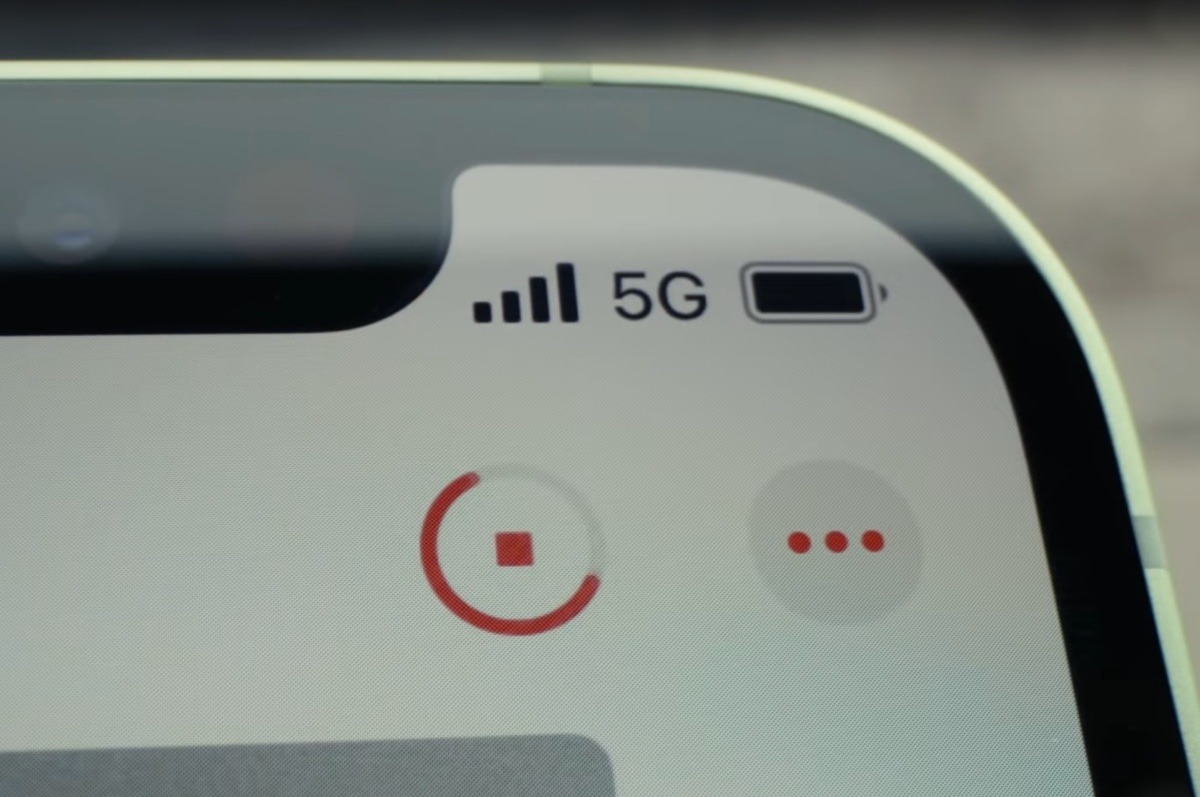There is a lot of talks, sometimes even inappropriately of 5G. The new generation mobile network already landed in some large cities. 5G stands for 5th Generation, the first antennas compatible with the new standard were installed in 2024.
Page Contents:
The pandemic has not slowed down expansion plans and new connectivity is increasingly widespread. In the next paragraphs, we will illustrate how 5G works, what are its advantages, and its performances.
5G will be a real revolution in mobile technology- not only will it be possible to see high-resolution videos with the same ease with which we listen to music today, but, thanks to the greater bandwidth available and the low latency, it will be possible to use that we still have difficulty in. to imagine.

A taste of this occurred with the cloud gaming to Google Stadia, Microsoft, and Amazon Xcloud Lua. Sooner or later, the 5G mobile connection may also replace our home broadband connections, offering comparable stability and latency.
How 5G works

First of all, 5G is the first connection protocol that provides for such different frequency spectra. We have two spectra of Sub-6GHz transmissions:
- one that travels on frequencies between 3.4 and 3.6GHz, which is the one most similar to previous generation networks;
- and one at 700 Mhz, which guarantees lower speeds but a greater degree of penetration, making it perfect for the Internet of Things.
Sub-6GHz broadcasts will soon be joined by frequencies between 24.25GHz and 29.5GHz, called millimeter wave or mmWave (in our language millimeter waves).
Millimeter waves represent the most revolutionary part of the generation leap. These travel at frequencies close to 30 GHz, it is such high frequencies that allow theoretical maximum speeds of 20 Gb/s.
Millimeter waves will also enable good network performance in areas with a high density of connected devices, such as stadiums or concerts, where the current network is suffering. Furthermore, latency will also be reduced, finally bringing to mobile values that can compete with those of the best current FTTH networks.
The large increase in frequency not only brings the advantages we have described but also causes some drawbacks, which are already partly visible to those who use a dual-band router at home. In fact, the most attentive will have noticed that the 5 GHz WiFi signal degrades with distance and when it crosses walls much faster than the 2.4 GHz one.
In general, a higher frequency electromagnetic wave propagates less and has more problems overcoming obstacles. Hence, the new millimeter waves will degrade significantly more significantly than older generation transmissions.
For this reason, it will be necessary to install a greater number of antennas at a shorter distance to ensure 5G coverage comparable to that offered by the 4G signal.
As for the speed, the theoretical maximum of 20 Gb/s normally drops in daily life by about 10 times. In most cases, a maximum speed in real conditions close to 1 Gb/s is now obtained, which should tend to increase in the coming years.
This is already a remarkable performance that exceeds 10 times what is possible in everyday life with an LTE connection.
The advantages of the 5G network
You could already guess from the characteristics of the network, but we outline them for you:
- decidedly higher speeds, comparable to those of fixed networks, in the order of Gb/s;
- very low latencies that will drop to 5ms, opening a whole new world of possibilities on the mobile, such as the cloud gaming we were talking about in the introduction;
- greater network stability even in situations with a greater number of connected devices, it will be possible to guarantee the connection to 1 million objects per square kilometer;
- possibility of an easier, omnipresent, reliable, and widespread Internet connection also thanks to the high-penetration frequency at 700 Mhz which will allow greater development of the Internet of Things.
However, there are also some disadvantages:
- the transition will not be rapid, not all the old antennas can be adapted to 5G technology and moreover, as we have said, they would be insufficient.
- For a long time, the difference in connection speed will increase between the metropolitan areas, which are more densely populated in the country, which will surely be reached sooner, and those less inhabited.
- Furthermore, for a long period of time, the new generation network will coexist with the previous generation ones.
The use of new frequencies, previously used by other services, forces the latter to change the way signals are transmitted/received (we will see more in the next paragraph).
The frequencies of 5G

We said that 5G will have a signal at three different frequencies. These present several problems, let’s start with the 700 Mhz one. On these pages, we have already talked about the transition of TVs to the new DVB-T2 standard. The new standard also serves to release these frequencies which are currently occupied.
To date, the spectrum dedicated to radio and television broadcasting in some countries is from 471.25 MHz to 790 MHz, by 2022 it will have to be reduced to the 471.25 MHz to 700 MHz bands. The greater efficiency of the new compression algorithm should however allow for offer the same number of channels (or almost).
Even on the other bands, the situation is not exactly rosy:
- In the spectrum between 3.4 GHz and 3.8 GHz, there are the defense frequencies, those of some satellite transmissions, and WiMax (whose frequency license expires in 2022).
- The 26-28Ghz band is also occupied until 2022, this time the licenses have FWA Open Fiber and Eolo.
The concession of the new frequencies was auctioned in the autumn of 2018, with the participation of Vodafone, TIM, Wind Tre, Iliad, Fastweb, Open Fiber, and Linkem.
Only the first 5 won the lots.
The health risks of 5G
We have heard everything about the possible risks deriving from the new generation connection, there were even those who attributed the outbreak of the pandemic to the new 5G signal.
The situation is complex, but we will try to be clear briefly.
More antennas and higher frequencies are two elements on which the detractors of the new generation beat a lot.
They claim that the higher frequencies are dangerous, this is false, as we have explained the more the frequency of a radio signal increases the worse its ability to propagate at a distance and to penetrate materials (therefore also the human body).
The greater number of antennas should not alarm us, as this will lead to transmissions with even lower and more homogeneous power than those of the previous generation.
There will therefore be no emission peaks that can now be detected near the repeaters.
Furthermore, thanks to the use of new technologies borrowed from WiFi connections such as beamforming and massive MIMO technology, the antennas will be smarter, being able to send the signal where it is needed. Unlike current antennas which transmit with the same power in all directions.
So why have even prestigious organizations launched alarms?
The answer lies in the number of connected devices, only in our country it is estimated that the devices connected to the new generation 5G mobile network could be between 600 and 800 million!
Precisely these estimates have led some to ask for more studies, fearing that the greater number of connected devices could cause a surge in electrosmog.
The two studies most cited by critics of 5G in this regard are those of the American government agency NTP (National Toxicology Program) and the Ramazzini Institute of Bologna, which correlates the onset of cancer and exposure to radiofrequency.
So what reassures us?
He reassures us that in our country there are very stringent legal values for electromagnetic radiation and, if these are revised, it can only be done by demonstrating the non-harmfulness of the new levels.
We are also reassured by studies showing that 5G could break down the most dangerous part of electrosmog, the high-power one, thanks to the new technologies used in antennas.

